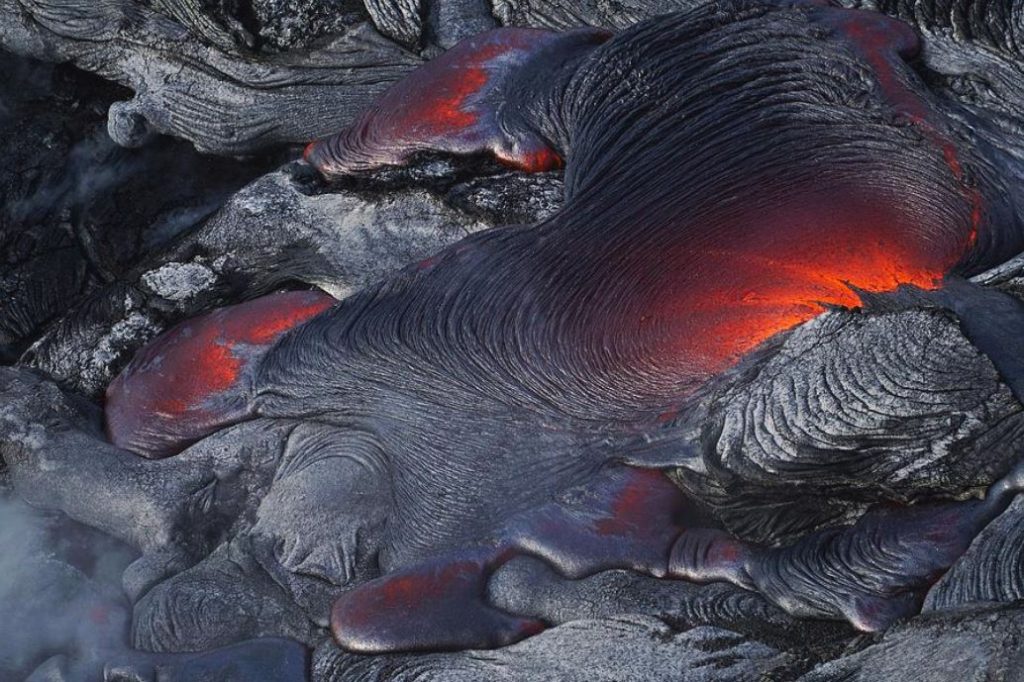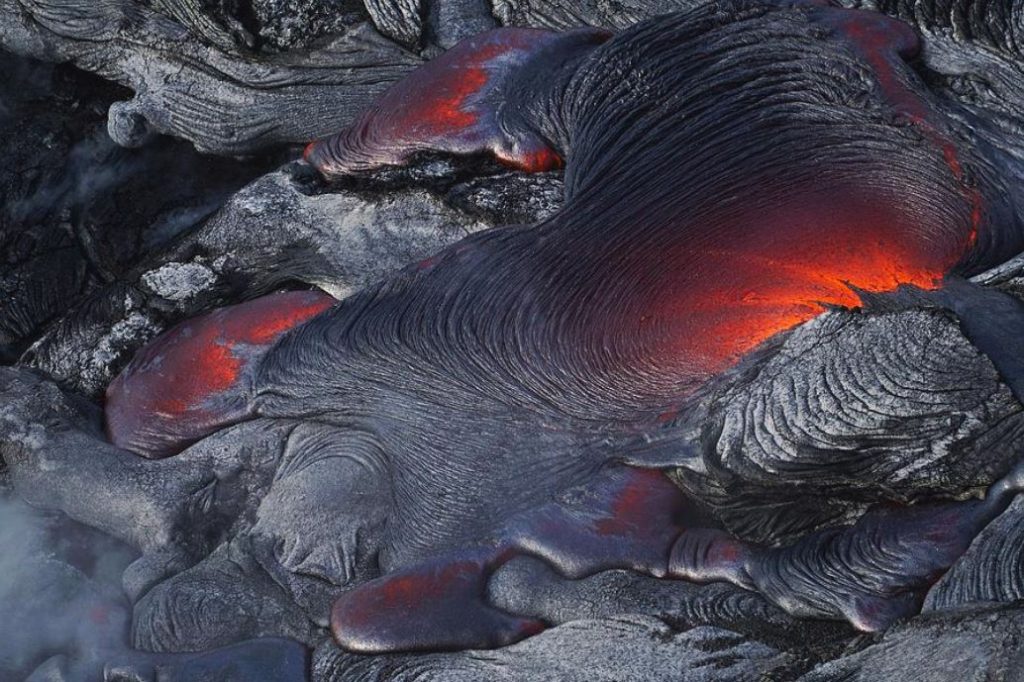This photograph, taken by Martin Rietze, is of lava flow in Kilauea. I find this image fascinating because it’s easy to see the effects of the lava’s high viscosity combined with the rapid convective cooling due to the surrounding environment. Subsequently, we can see the ripples and wrinkles of the flow as it rapidly cools. Furthermore, the color gradient from bright orange to slate gray is not only beautiful, but also displays the physical energy contained in very hot materials and the release of photons due to this energy. The gorgeous gradient from vibrant orange to poignant black is not only visually stunning, but also seems to concisely articulate the complex fluid dynamics, quantum physics, and material properties of lava.
Best of Web \\ Brooke Shade

Lava flow, photographed by Martin Rietze, 2016 ( http://mrietze.com/ )
This photograph, taken by Martin Rietze, is of lava flow in Kilauea. I find this image fascinating because it’s easy to see the effects of the lava’s high viscosity combined with the rapid convective cooling due to the surrounding environment. Subsequently, we can see the ripples and wrinkles of the flow as it rapidly cools. Furthermore, the color gradient from bright orange to slate gray is not only beautiful, but also displays the physical energy contained in very hot materials and the release of photons due to this energy. The gorgeous gradient from vibrant orange to poignant black is not only visually stunning, but also seems to concisely articulate the complex fluid dynamics, quantum physics, and material properties of lava.
Categories
Flow Vis Guidebook
- Introduction to the Guidebook
- Overview 1: Phenomena. Why Does It Look Like That?
- Overview 2: Visualization Techniques
- Overview 3: Lighting
- Overview 4 - Photography A: Composition and Studio Workflow
- Overview 4 - Photography B: Cameras
- Overview 4 - Photography C: Lenses - Focal Length
- Overview 4 - Photography C: Lenses - Aperture and DOF
- Overview 4: Photography D: Exposure
- Overview 4 - Photography E - Resolution
- Overview 5 - Post-Processing
- Clouds 1: Names
- Clouds 2: Why Are There Clouds? Lift Mechanism 1: Instability
- Clouds 3: Skew - T and Instability
- Clouds 4: Clouds in Unstable Atmosphere
- Clouds 5: Lift Mechanism 2 - Orographics
- Clouds 6: Lift Mechanism 3 - Weather Systems
- Boundary Techniques - Introduction
- Dye Techniques 1 - Do Not Disturb
- Dye Techniques 2 - High Visibility
- Dye Techniques 3 - Light Emitting Fluids
- Refractive Index Techniques 1: Liquid Surfaces
- Refractive Index Techniques 2: Shadowgraphy and Schlieren
- Particles 1- Physics: Flow and Light
- Particles 2: Aerosols
- Particles 3: In Water
- Particles 4 -Dilute Particle Techniques
- Art and Science
- TOC and Zotpress test
- Photons, Wavelength and Color

